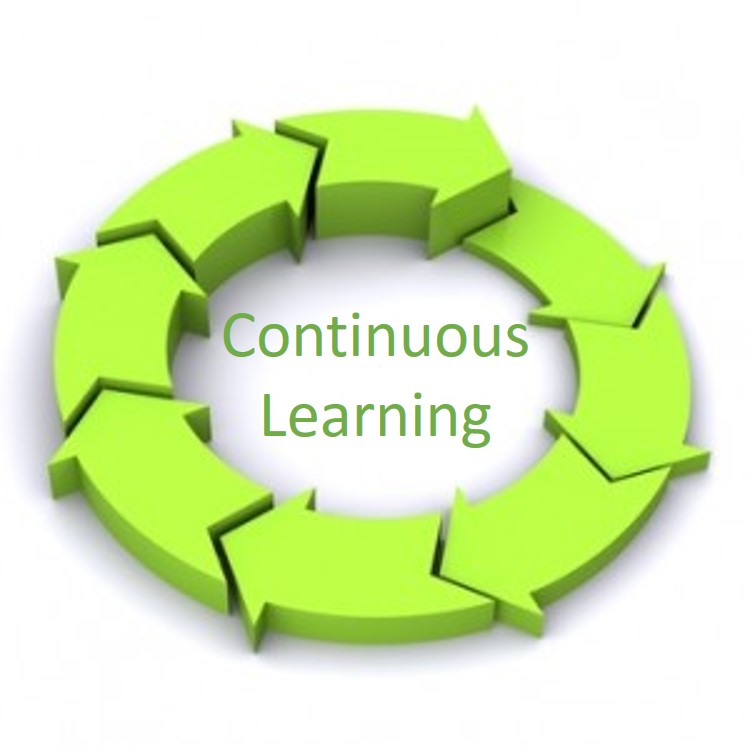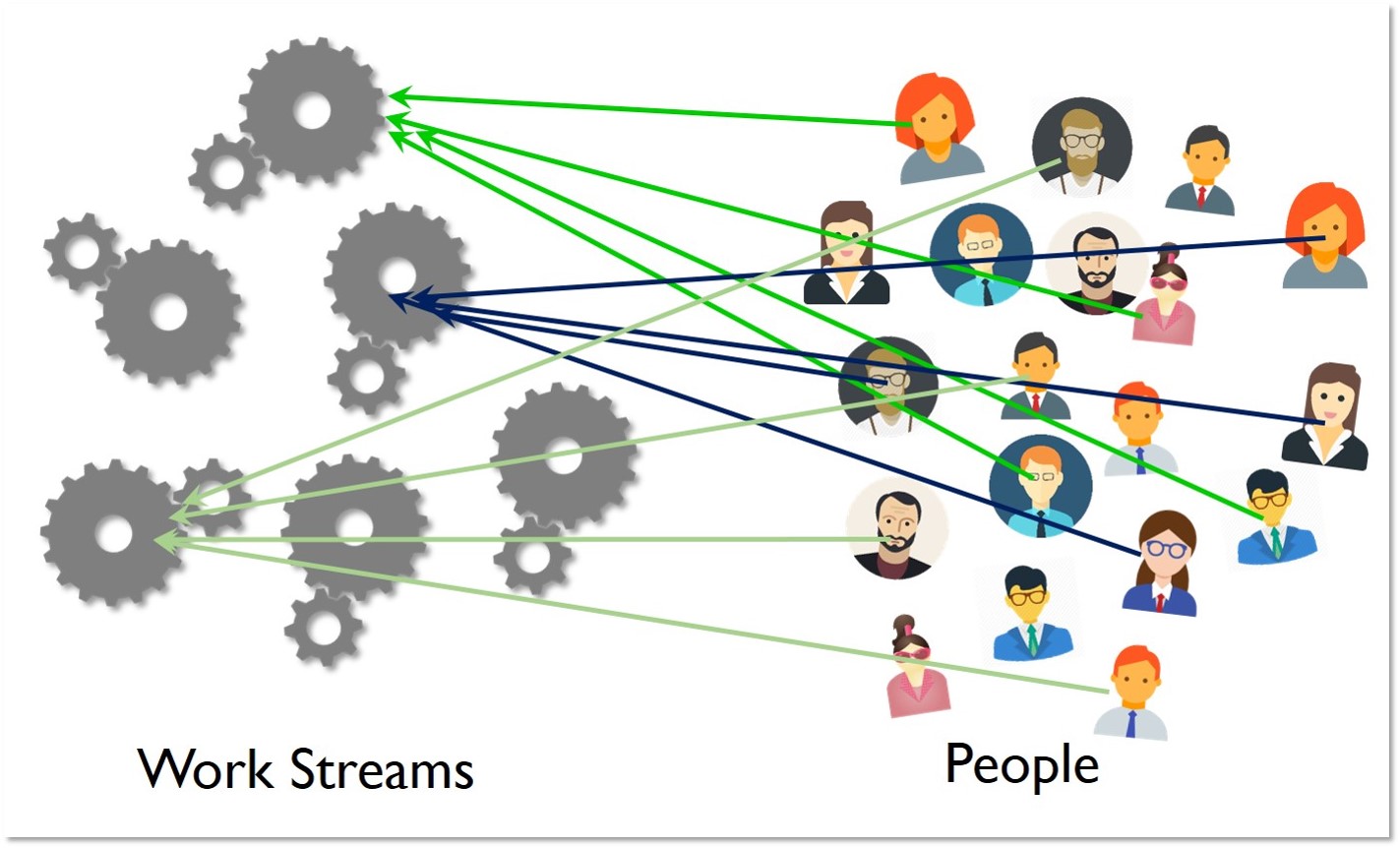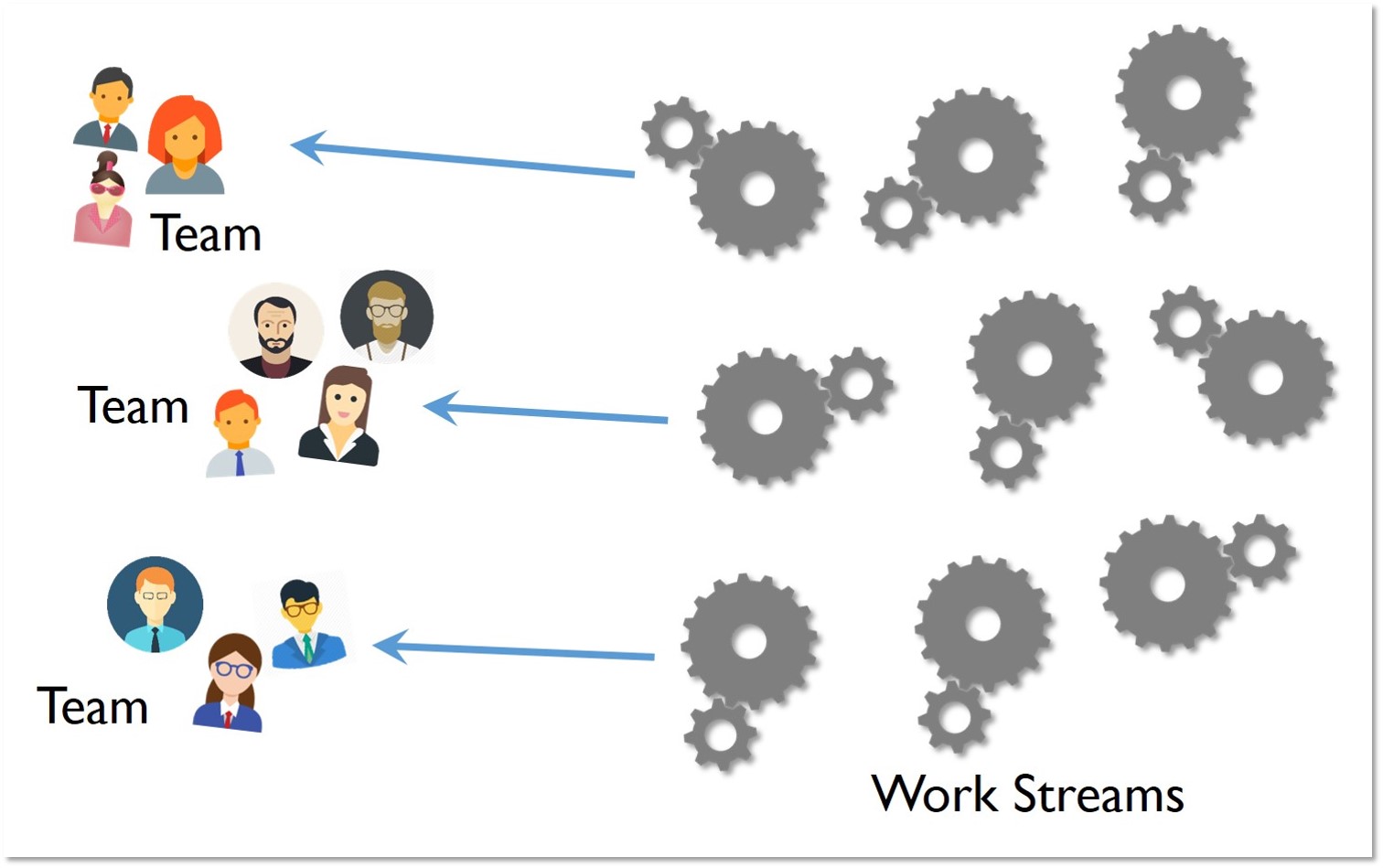 At its heart, agility is about how groups of people get meaningful work done. It's focused on teams. How to form them; how to get work to them; how to lead them; how to measure them; how to make them most effective. This thought does not just lie in the agile community. To thrive in today's world of rapid change and growing complexity, Peter Senge advocates in his book The Fifth Discipline that organizations become learning organizations and describes teams as the fundamental unit of organizational learning. It is not individual intelligence we need Senge says, it is collective intelligence. In a learning organization, teams build collective intelligence to gain a better understanding of how the organization operates as a whole, as a system, and can therefore derive better, more cohesive ways to improve it.
At its heart, agility is about how groups of people get meaningful work done. It's focused on teams. How to form them; how to get work to them; how to lead them; how to measure them; how to make them most effective. This thought does not just lie in the agile community. To thrive in today's world of rapid change and growing complexity, Peter Senge advocates in his book The Fifth Discipline that organizations become learning organizations and describes teams as the fundamental unit of organizational learning. It is not individual intelligence we need Senge says, it is collective intelligence. In a learning organization, teams build collective intelligence to gain a better understanding of how the organization operates as a whole, as a system, and can therefore derive better, more cohesive ways to improve it.
Much about the traditional world of getting stuff done works against that goal. Corporate organizational hierarchies create boundaries between and within vertical silos of knowledge. The benefit is growing specific competencies. It is how software developers become better developers; analysts become better analysts; sales representatives become better sales reps. It is how we set guidelines and standards to improve how the vertical does what it does. It sets focus and direction (within the vertical), and is how we often manage career advancement.
On the flip slide that same vertical structure impedes getting work done. There is no one vertical knowledge silo that can accomplish an organizational goal by itself. In the product development world, there is no one vertical that can grab a new feature and work it through the product development process to deliver it to the end customer. That takes collaboration. It takes the verticals working together toward a common goal.
Project Centric Organizations
To ease the silo navigation, we form matrixed, "horizontal", teams across the verticals. Although some view that as the agile concept of cross-functional teams, project teams have always been formed this way. Where agile team concepts really come into play is in how we view those teams, and what happens to them when projects conclude.
 As the need arises to start new work, project centric organizations create teams on-the-fly from available (or partially available) "resources" with the requisite skill sets. They bring people to the work. Within individual project teams, collective knowledge is repeatedly built up during the execution of the project and rapidly discarded by disbanding the team when the project is complete.
As the need arises to start new work, project centric organizations create teams on-the-fly from available (or partially available) "resources" with the requisite skill sets. They bring people to the work. Within individual project teams, collective knowledge is repeatedly built up during the execution of the project and rapidly discarded by disbanding the team when the project is complete.
Rather than focusing on true teams, the project centric model tends to focus on individual contributors, creating more inward thinking than outward thinking. Level of engagement, productivity, quality and predictability all suffer as a result. Worse yet, they perpetuate the silos of knowledge and there is little, if any, effort expended to improve the overall organization, the system itself.
Team Centric Organizations
Enter then the notion of true high-performance agile teams. These teams are mindfully formed primarily based not on technology concerns, but people concerns. These teams group people who can learn to work together as one. These teams have a good mix of technical competencies to be sure, but more importantly are comprised of people that can build trust in one another. That can assume more accountability together. That can experiment together; make decisions together; make commitments together; succeed and fail together; learn together. Together these teams build collective intelligence becoming Peter Senge's fundamental unit of organizational learning and therefore the fundamental unit of the organizational improvement that underlie agile values, principles and practices.
Two factors come into play with these teams. Dedication and stability. How many members of a team are fully dedicated to the team, and only to that team? How often does a member of one team move to a different team? Using the project and team data available in its ALM tool, Rally (now part of CA Technologies) has published some interesting analysis of these factors. Conventional management thinking believes that assigning people to multiple projects allows for better responsiveness to changing needs. Rally's data shows very little impact to responsiveness for teams that are less than 50% fully dedicated. The impact that is revealed however, is a significant reduction in productivity, quality, and predictability. Adding team stability into the mix, as teams become more fully dedicated (around 85%) and more stable (around 80%), organizations see a 60% increase in productivity, a 40% increase in predictability, and a 60% increase in responsiveness.
 Because the project centric model is more focused on individual contributors, it inhibits the formation and long-term growth of more fully dedicated, stable, high performance teams. We need a new model, a team centric model that better respects the power of teams and strives to keep team together. Team Centric organizations do not bring people to work. Instead they bring work to teams. Dedicated, stable, accountable teams. As work streams materialize, management and teams collectively decide which team is best suited for the work and prioritize it within the team's capacity. The result brings not only the performance improvements that Rally identifies, but also the ability to build collective intelligence about the organization as a system. That collective learning enables a better understanding of the system, how problems actually occur within it, and how to solve those problems in creative, insightful ways that create the long lasting improvement that agility promises.
Because the project centric model is more focused on individual contributors, it inhibits the formation and long-term growth of more fully dedicated, stable, high performance teams. We need a new model, a team centric model that better respects the power of teams and strives to keep team together. Team Centric organizations do not bring people to work. Instead they bring work to teams. Dedicated, stable, accountable teams. As work streams materialize, management and teams collectively decide which team is best suited for the work and prioritize it within the team's capacity. The result brings not only the performance improvements that Rally identifies, but also the ability to build collective intelligence about the organization as a system. That collective learning enables a better understanding of the system, how problems actually occur within it, and how to solve those problems in creative, insightful ways that create the long lasting improvement that agility promises.
Productivity. Quality. Predictability. Responsiveness. Are these important to your organization?
If so, start today by changing your thinking around teams. Start today by viewing teams as the corporate asset that they really are. Start today by moving away from being a Project Centric organization of individual contributors to a Team Centric organization that focuses more on people and how they work together in high performance teams that achieve your organization's highest goals.

